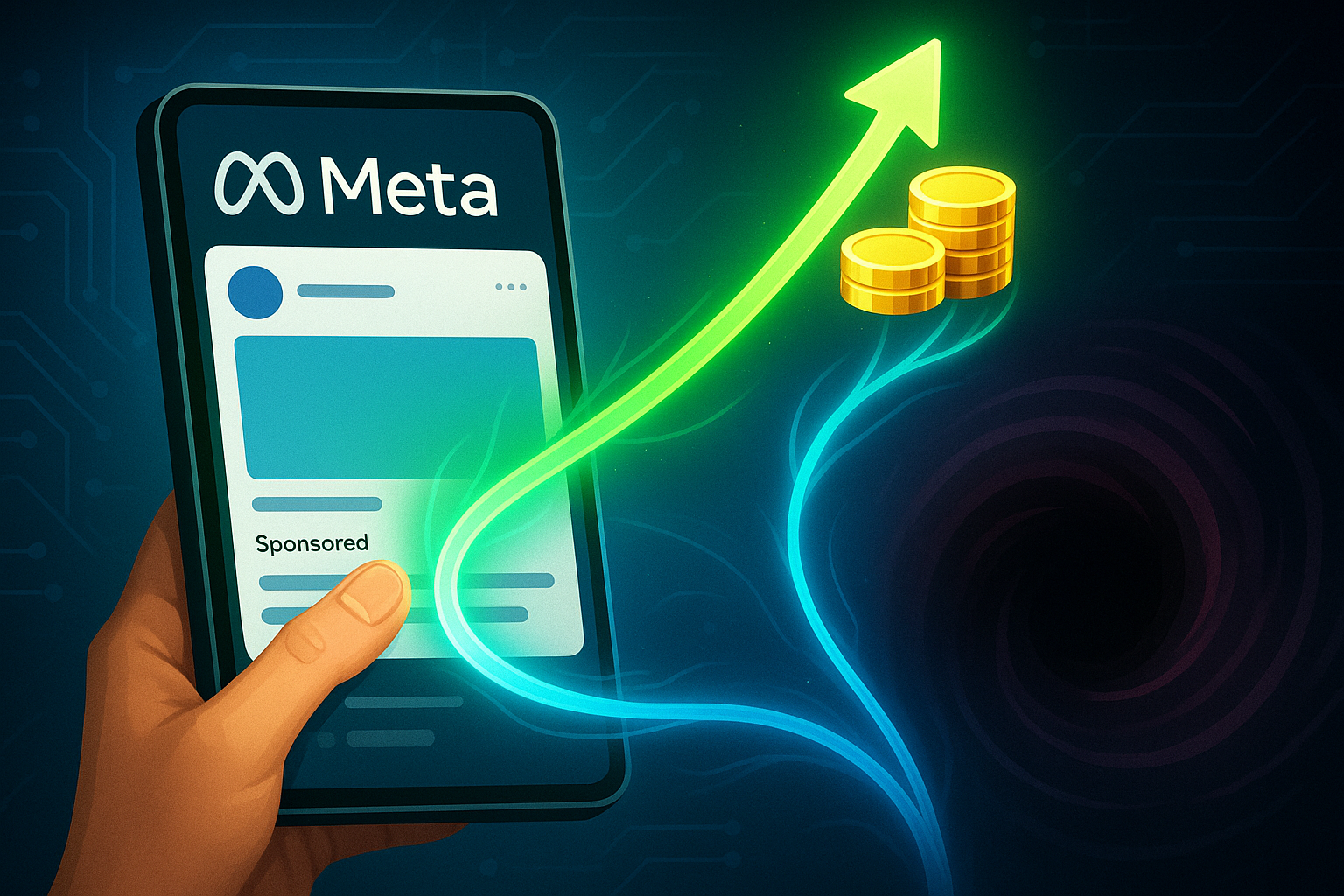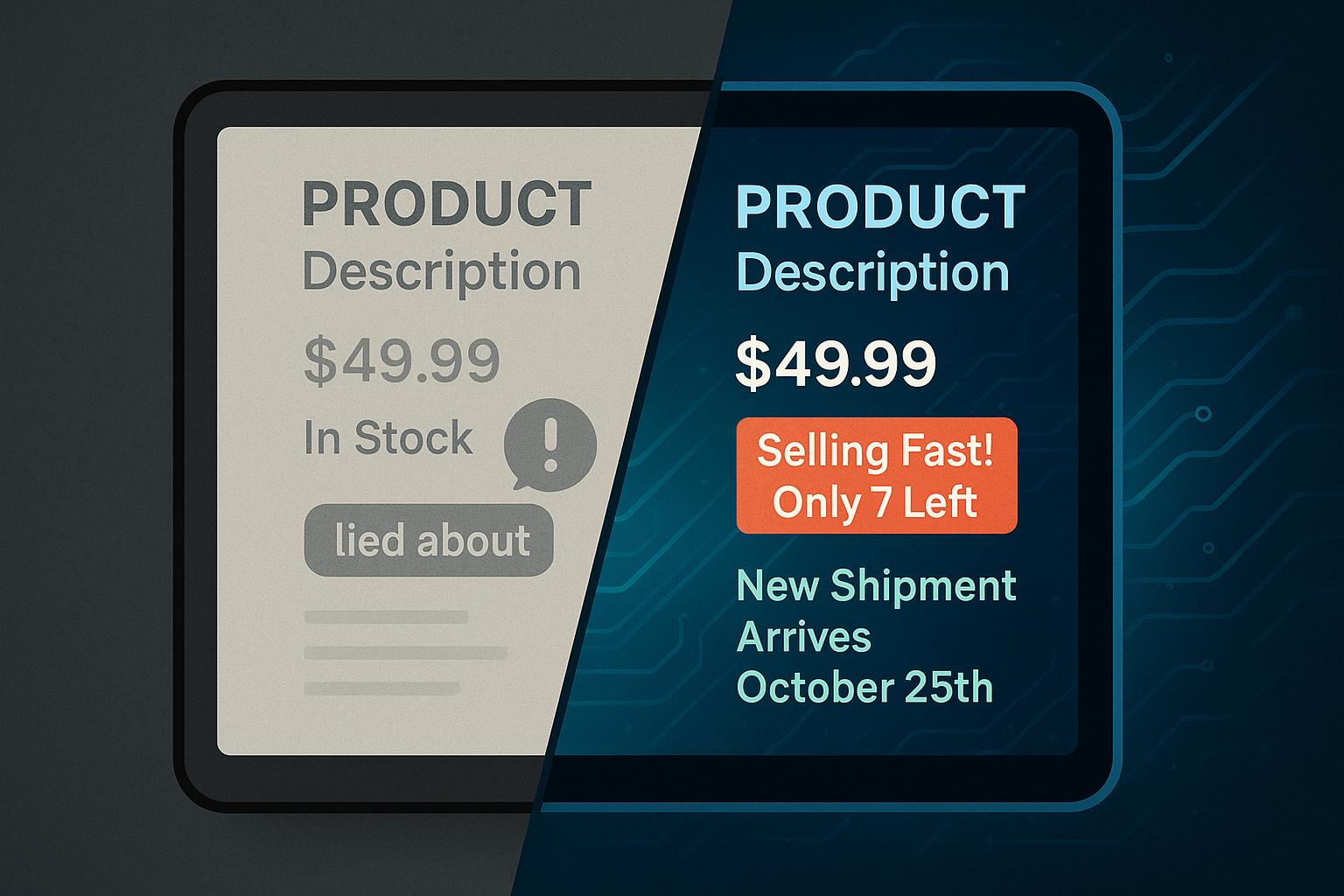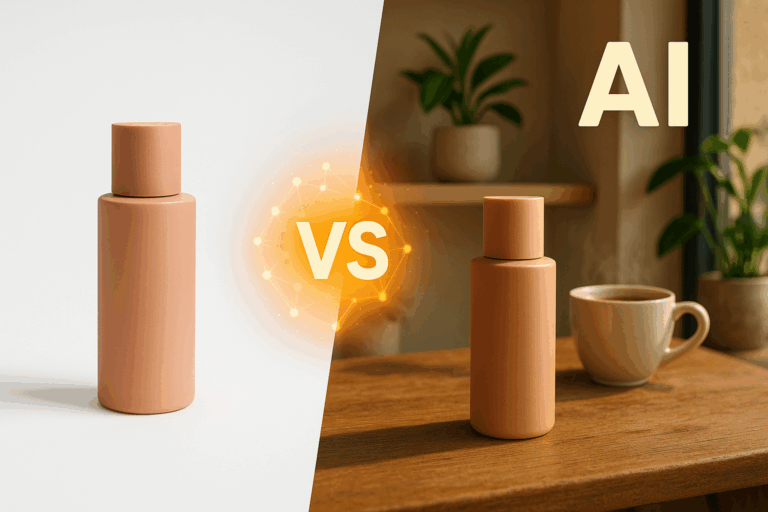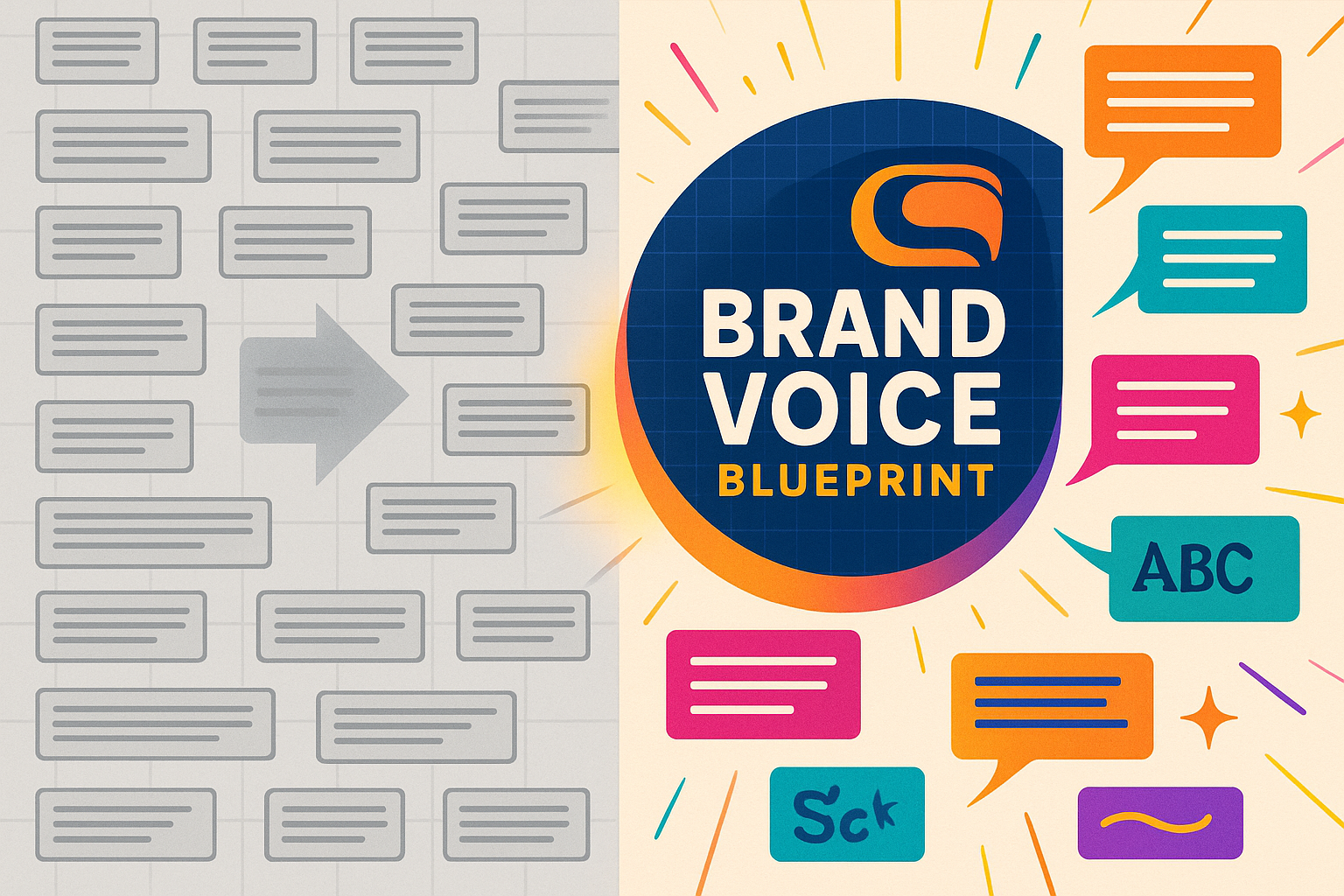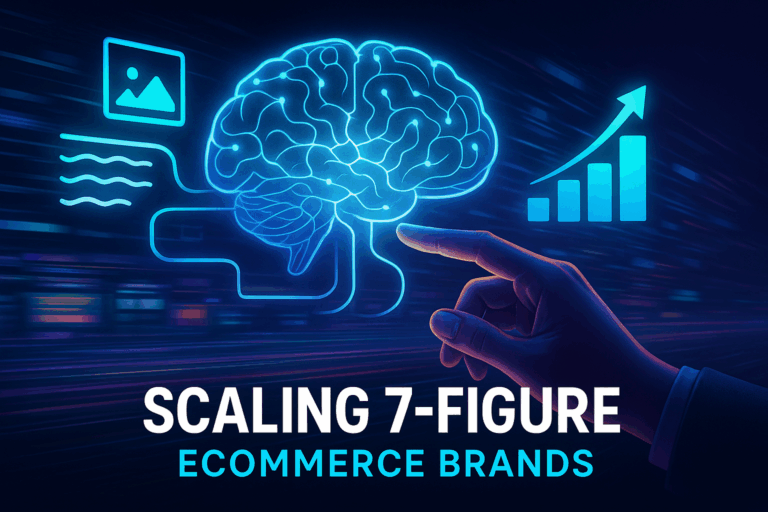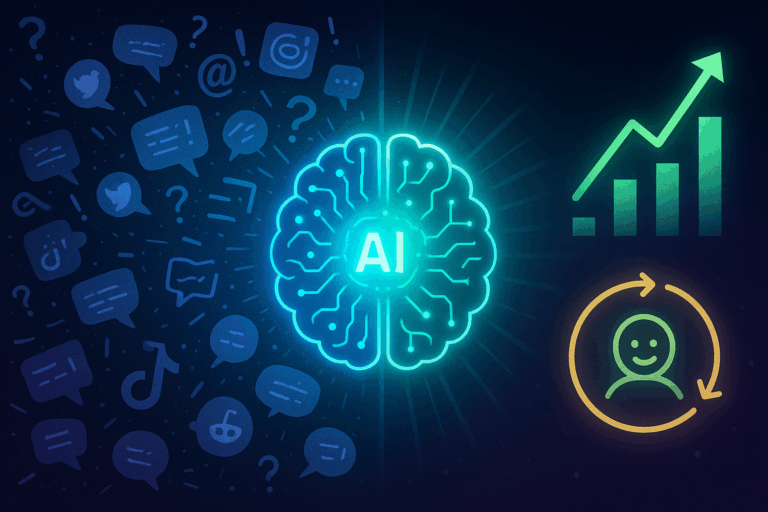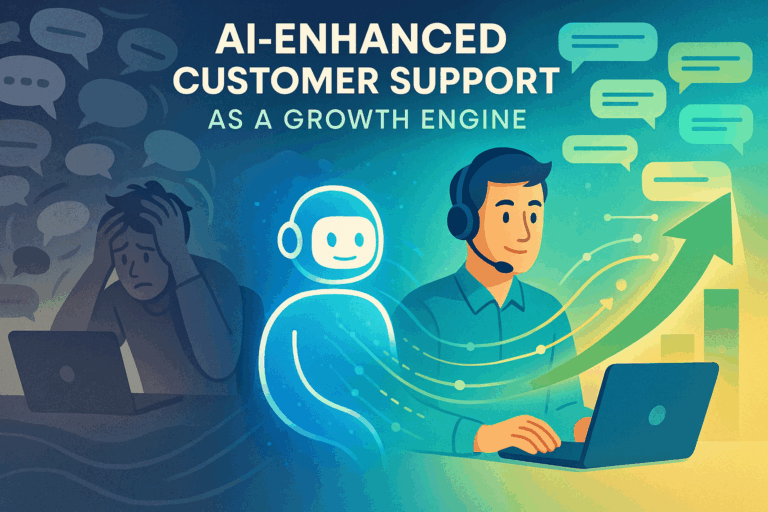You’ve seen the prompts. That little blue button inviting you to switch to an “Advantage+ Shopping Campaign.” It whispers promises of effortless scaling, automated targeting, and hands-off campaign management. For a busy ecommerce marketer juggling a dozen tasks, it sounds less like a feature and more like a miracle.
But then, a healthy dose of skepticism creeps in. Can a machine really understand the nuances of your brand? Is it optimizing for your profit margin or just for Meta’s ad revenue?
Here’s the truth: Meta’s AI can be an incredibly powerful tools to power your ecommerce brand. But it’s not magic. It’s an engine that requires a skilled driver.
Treating it like a “set it and forget it” button can lead to wasted spend and a diluted brand voice. Understanding how to work with it, however, can unlock unprecedented growth.
This guide will walk you through how Meta’s AI really works, the hidden pitfalls to avoid, and how to create a powerful human-AI partnership that drives real, profitable results for your brand.
What Exactly Is “AI” in Your Meta Ads?
When we talk about AI in Meta Ads, we’re mostly talking about a sophisticated suite of tools called Advantage+. This isn’t one single thing, but a collection of features powered by machine learning that automates parts of the ad creation and delivery process.
Think of it like this: For years, you had to manually tell Meta exactly who to target, where to place ads, and which creative to show. Now, Meta’s AI can analyze trillions of data points in real-time to make many of those decisions for you.
Here are the key components you’ll encounter:
- Advantage+ Shopping Campaigns: This is the big one. It streamlines campaign setup by consolidating audience targeting, creative testing, and placement decisions into a single, AI-driven campaign aimed at maximizing conversions.
- Advantage+ Audience: Instead of manually building detailed interest and lookalike audiences, you provide Meta with signals (like your pixel data or customer lists), and its AI searches for people likely to convert, even if they fall outside your original targeting parameters.
- Advantage+ Creative: This feature automatically optimizes your ad creative. It can make small adjustments like brightening an image, testing different headline and primary text combinations, or even adding music from Meta’s library to a static image to create a simple video.
- Advantage+ Placements: The AI automatically determines the best places to show your ads across Meta’s entire network (Facebook Feed, Instagram Stories, Reels, etc.) to get the most results for the lowest cost.
The goal of all this? To move past manual guesswork and let data-driven algorithms find the most efficient path to a conversion.
The Promise: How Meta’s AI Is Designed to Scale Your Ecommerce Brand
When properly managed, the benefits of using Meta’s AI are undeniable. The system is designed to learn and adapt faster than any human possibly could.
1. Finding Your Next Best Customer (Before You Do)
Traditional targeting is limited by your own assumptions. You target people interested in “hiking” for your outdoor gear brand.
But what about the person who just started researching national parks for a family vacation? Or the office worker looking for a durable, waterproof backpack for their commute?
Meta’s AI can see these signals. It connects dots across user behavior, purchase history, and content engagement to identify high-intent customers you would have never thought to target.
Used this way, the AI can expand your brand’s reach to new, untapped audience pockets.
2. Ending Creative Fatigue
Ever wondered which is better: the product-focused video or the lifestyle image with a customer testimonial? With Advantage+ Creative, you don’t have to guess. You can load up multiple assets—images, videos, headlines, descriptions—and the AI will act as a relentless tester.
It creates thousands of micro-variations on the fly, delivering the best-performing combination to each individual user. The result is a more relevant ad experience for the customer and better performance for you, without having to manually build and monitor dozens of ad sets.
3. Smart Budgeting in Real-Time
In a manual campaign, you might allocate 70% of your budget to your best-performing ad set. But what if a new creative in a smaller ad set suddenly takes off? It might be hours or even a day before you notice and shift the budget.
Advantage+ campaigns adjust spend in real-time, moving your budget to the audiences, creatives, and placements that are delivering results right now.
The Critical Question: Is Meta’s AI Working for You or for Meta?
Here’s where we need to be the “skeptical optimist.” Meta’s AI is incredibly powerful, but its primary goal is to achieve the objective you set, in the most efficient way for its platform. This can sometimes create a conflict of interest between Meta’s bottom line and your brand’s actual profitability.
The most common trap is optimizing for a high Return On Ad Spend (ROAS) without considering your profit margins. The AI might discover it can get a fantastic ROAS by selling a high volume of your lowest-margin product. Your revenue numbers look great, and Meta’s algorithm looks like a hero, but your actual take-home profit could be suffering.
This is the “black box” problem. The AI makes decisions based on data, but it doesn’t always show its work. It doesn’t understand that one product has a 50% margin while another has only 15%. It just knows which one is easier to sell to get the target ROAS.
Without strategic human oversight, you risk building a very efficient system that’s optimizing for the wrong business goal. True success isn’t just about revenue; it’s about profitable growth.
The Human-AI Partnership: Your Playbook for Profitable Campaigns
AI isn’t replacing strategy—it’s amplifying it. The best results come from a partnership where human intelligence guides the machine. Here’s how to do it.
1. Feed the Machine High-Quality Ingredients
Meta’s AI is only as good as the data you give it. A messy, incomplete, or unoptimized product feed is like giving a master chef rotten vegetables. The output will be disappointing, no matter how skilled they are.
Practical Takeaway: Your product feed is the foundation of your success. Ensure it’s perfectly optimized with high-quality images, keyword-rich titles, and accurate attributes. This is where proprietary product feed optimization strategies become a massive competitive advantage, ensuring the AI has the best possible information to work with from day one.
2. Be the Creative Director, Not Just an Asset Uploader
The AI is brilliant at optimizing and testing creative variations, but it can’t invent a groundbreaking new marketing angle. It can’t understand the cultural zeitgeist or the deep emotional drivers of your brand. That’s your job.
Practical Takeaway: Focus your energy on strategic creative development. Test fundamentally different hooks, value propositions, and visual styles. Let the AI handle the micro-optimizations (like which headline goes with which image), while you focus on the big-picture creative strategy. Remember to monitor your competitors’ strategies—an Ecommerce Competitor Spy Tool can provide the intelligence you need to stay one step ahead.
3. Set Smarter Guardrails and Look Beyond ROAS
Don’t just hand over the keys and hope for the best. Guide the AI with clear, profit-driven objectives.
Practical Takeaway:
- Use Value-Based Bidding: If you can pass profit data back to Meta, you can instruct the AI to optimize for profit, not just revenue.
- Monitor New Customer Acquisition: Keep an eye on your new vs. returning customer ratio. A high ROAS driven entirely by existing customers might not be achieving your growth goals.
- Analyze the Data: Don’t just look at the dashboard. Dig into your own analytics to see which products the AI is pushing. If it’s consistently favoring low-margin items, you may need to adjust your strategy or product catalog.
4. Know When to Go Manual
Advantage+ isn’t always the right answer. For very specific, niche campaigns or when you have a limited budget, the broad exploration phase of the AI can be inefficient.
Practical Takeaway: Consider more manual campaigns when:
- You have a very small, well-defined audience (e.g., retargeting attendees of a specific webinar).
- You need absolute control over budget allocation between different ad sets.
- You’re testing in a brand new market with very little data for the AI to learn from.
What’s Next? Emerging AI Features to Watch
The world of AI in advertising is moving fast. Meta is already rolling out generative AI features that can write ad copy and create image backgrounds. As these tools become more sophisticated, the need for human strategic oversight will only grow.
The future isn’t about one platform; it’s about an ecosystem. Managing data feeds, ad performance, and content creation across multiple channels will become increasingly complex.
This is where holistic systems, including custom AI agents, will be essential for orchestrating and automating these intricate strategies at scale.
Frequently Asked Questions (FAQ)
What’s the difference between Advantage+ Audience and detailed targeting?
Detailed targeting requires you to manually select interests, behaviors, and demographics. Advantage+ Audience uses your pixel data and customer lists as a starting point and then lets its AI find audiences beyond your manual selections who are likely to convert. It’s a shift from “who I think my customer is” to “who Meta’s data shows my customer is.”
Can Advantage+ campaigns work for a small budget?
Yes, but with a caveat. The AI needs enough data to exit its “learning phase” efficiently. With a very small budget (e.g., under $50/day), it can take a long time to get enough conversions for the algorithm to optimize effectively. In such cases, a more controlled manual campaign might yield better initial results.
How long does it take for Meta’s AI to learn?
The learning phase typically requires about 50 conversions within a 7-day period per ad set. During this time, performance can be volatile. It’s crucial not to make significant changes to the campaign during this phase, as it can reset the learning process.
My Advantage+ Shopping Campaign is failing. What should I check?
Creative: Is your creative compelling? The best targeting can’t save bad ads. Test new angles and formats.
Offer: Is your offer competitive? The AI might be showing your ad to the right people, but if your price, shipping, or promotion isn’t appealing, they won’t convert.
Data Quality: Is your Pixel and Conversions API set up correctly? Bad data in means bad results out.
Product Feed: Are your products accurately represented? Make sure your feed is fully optimized and error-free.
Your Strategy Is the Difference-Maker
Meta’s AI is not a threat to skilled marketers; it’s a force multiplier. It automates the tedious and frees you up to focus on what matters most: strategy, creative, and understanding your customer.
By embracing this human-AI partnership, you can move beyond simple automation and build a truly intelligent, profitable, and scalable advertising engine for your ecommerce brand. The brands that win in this new era won’t be the ones that simply turn on the AI, but the ones that learn how to direct it with wisdom and strategic insight.
As you continue to navigate the evolving search landscape, remember that a holistic approach is key. Understanding how your paid efforts connect with your organic strategy through our comprehensive guide to Generative Engine Optimization (GEO) will give you a complete picture of your brand’s visibility.

